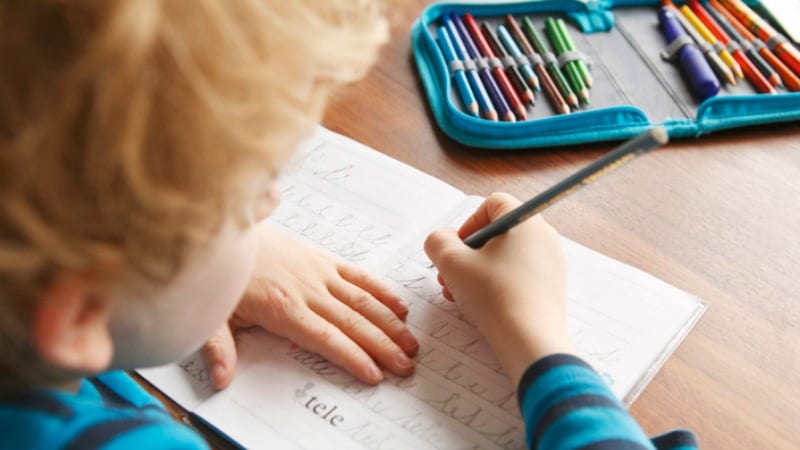According to the USA Today, 41 states no longer require handwriting instruction. That’s not surprising, since the Common Core has shifted the focus to skills which support technology, like keyboarding instruction. But the benefits of handwriting, and cursive in particular, have long been documented. In addition to the effects on brain development, handwriting helps students build fine motor skills and dexterity, and leads to greater engagement and retention. In addition, research shows that cursive writing is beneficial for students with learning disabilities.
Here are a few ways cursive instruction benefits students.
Brain development
According to a study conducted by the University of Washington, learning to print, write in cursive, and type on a keyboard all contribute to brain development in students. But instruction in cursive writing in particular seems to produce the greatest neurological effects.
The key difference is that cursive writing stimulates brain synapses and the synchronicity between both sides of the brain, unlike printing or typing. William Klemm, senior professor of neuroscience at Texas A&M University, states, “Handwriting (cursive writing) dynamically engages widespread areas of both cerebral hemispheres.” He references brain scans taken during handwriting that show activation of extensive regions of the brain involved in thinking, language, and working memory.
[contextly_auto_sidebar]
Handwriting expert Jeanette Farmer provides a strong argument for setting aside time for cursive instruction. “Handwriting has a physiological/psychological link in the brain,” she states. “This link is so strong that nothing else done in the classroom can begin to compare with the powerful impact that repetitively manipulating the thumb and fingers over time has on the young brain.”
Mental engagement
Handwriting contributes to greater retention and deeper learning in students. It only makes sense that students spend more time processing, and have a greater ability to remember, things they create by hand.
Learning how to write in cursive matters because it demands focused attention. First a child has to think about the structure of each letter, then figure out how to mechanically reproduce it. Repeating this active process over and over helps build a foundation of literacy learning.
This holds true for older students as well. According to researchers Pam Mueller and Daniel Oppenheimer, “Students who take notes on a laptop tend to transcribe lectures verbatim, while students who hand-write notes process information and reframe it in their own words, reinforcing learning.”
Kinesthetic benefits
When students learn to write in cursive, they must coordinate fine motor skills with visual and tactile processing abilities. The physical act of touching pen to paper builds muscle memory that is foundational for learning. Writing in cursive requires knowledge of not just letter formation, but the curves and connections as well. This requires hand-eye coordination—a skill that is integral to learning to play a musical instrument, participate in sports, use tools, and even master a computer keyboard.
Benefits for students with learning disabilities
A 2012 review suggests that cursive may be particularly effective for individuals with neurological disorders such as dyslexia and dysgraphia. Dyslexia is caused by a disconnect between the auditory and language centers of the brain. As stated above, writing in cursive has the effect on the brain of joining together these two centers. In addition, cursive writing, with its connected letters and fluid motion, has been shown to help students with dysgraphia, which is characterized by motor control difficulties in writing.
We all know teachers only have so many hours in the day, and standards dictate other priorities. But the overwhelming evidence shows that cursive instruction has enormous benefits for our students. Setting aside a few minutes each week to teach cursive writing is something we need to invest in.
Do you make time for cursive instruction in your classroom? Come share in our WeAreTeachers HELPLINE! group on Facebook.
Also, check out What Teachers Need to Know About Dysgraphia and 10 Things About Dyslexia Teachers Need to Know.

